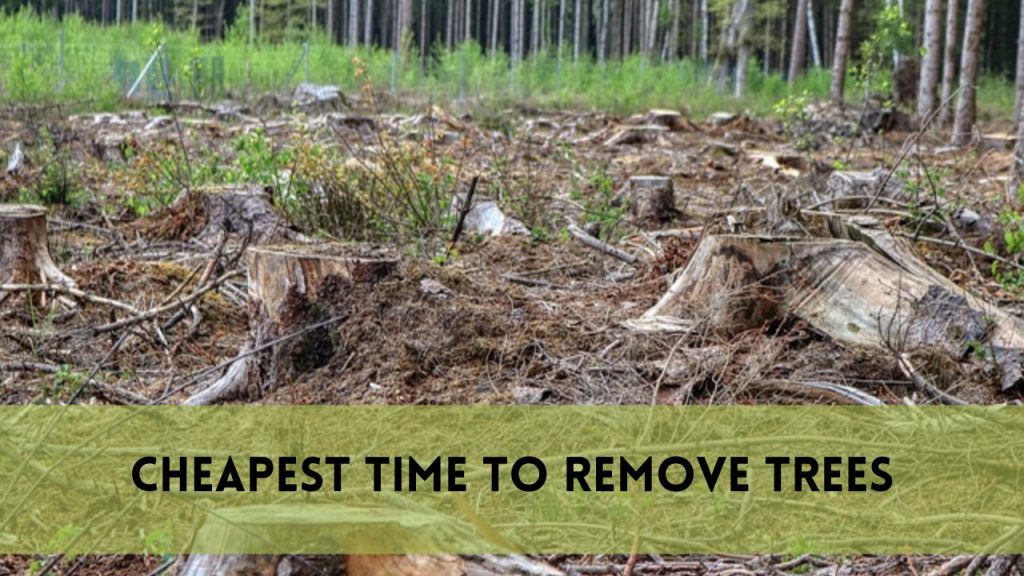With their elegant fronds and exotic appeal, palm trees have long been adored as complements to gardens and landscapes. But occasionally it’s necessary to get rid of a palm tree, which includes dealing with its huge root system. Although removing palm tree roots can be difficult, it can be done successfully with the appropriate information and equipment. We will examine the procedures and factors to be taken into account for effectively and safely removing palm tree roots from your yard in this in-depth tutorial.
Why You Need to Remove Palm Tree Roots?
Concerns with Aesthetics
Although palm trees are renowned for their beautiful appearance, their roots might eventually rise to the surface, resulting in an uneven and ugly landscape. Root removal can improve the overall look of your outdoor area by restoring its aesthetics.
Structural damage
Your property may suffer from invasive palm tree roots. They may harm building foundations as well as walkways and roadways. The integrity of your landscape can be preserved, and costly structural repairs can be avoided with prompt root removal.
Identify
Examine your palm tree carefully and mark the precise roots you wish to remove before starting root removal. Cutting too many roots can endanger the stability and health of the tree, so exercise caution.
Choosing Removal Objectives
Choose whether the palm tree has to be completely removed or whether root maintenance is your major priority. Understanding your removal objectives will determine the process’s length.
Tools:
Safety equipment includes protective gloves, goggles, and durable clothes to keep you safe while working.
- Digging around the root system requires a strong shovel.
- For chopping through larger roots, use an ax or chainsaw.
- A pickaxe or a mattock is useful for removing obstinate roots from the ground.
- To cut smaller roots, use pruning shears or loppers.
- Root Barrier Fabric (Optional): Root barrier fabric can be useful if you wish to stop root regrowth in a particular location.
Safety Measures
Prioritize safety before you start.
- Put on protective clothing, such as gloves, safety glasses, and long sleeves, to guard against any nicks and debris.
- Make sure there are no people, pets, or expensive items near the palm tree.
- If the palm tree is close to electricity lines, speak with your utility company or engage a specialist for advice.
Methods to Remove Palm Tree Roots
Digging and pulling:
- Start by exposing the root system by excavating around the palm tree’s base.
- As you come across smaller roots, use loppers or pruning shears to remove them.
- Use a pickaxe or mattock to cut bigger roots into smaller pieces.
- Once the roots are chopped and loosened, you can try to pull them out by hand or, if they are very difficult to remove, use a vehicle to assist with extraction.
- Compact the soil you use to fill the gap the roots’ removal left behind.
Log Grinder:
- Safety equipment and a stump grinder are required.
- A stump grinder is a tool made especially to remove palm tree roots and stumps; you can rent or hire one.
- Apply the stump grinder’s instructions provided by the manufacturer.
- Place the grinder over the palm tree stump, and start removing the roots and the stump.
- Once the roots and stump have been reduced to a few inches below ground, keep grinding.
- Remove any leftover wood chips, then bury the hole in the soil.
Chemical Treatment:
- Glyphosate-based herbicides, gloves, and safety equipment are required.
- Using a chainsaw, trim the palm tree as close to the ground as you can.
- Make many holes in the exposed roots and the top of the stump.
- Fill the holes with a glyphosate-based herbicide. For the precise herbicide you’re using, follow the manufacturer’s recommendations.
- Put a vinyl tarp over the stump and exposed roots to stop rainfall from diluting the herbicide.
- Wait for the herbicide to start working before starting to break down the stump and roots. It can take a few weeks.
- You can remove any leftover material and replace the hole with soil once the roots have broken down.
Mechanical Removal:
- Tools Needed: Backhoe, excavator, or heavy machinery; safety gear
- Rent or hire heavy machinery, such as a backhoe or excavator.
- Position the machinery near the palm tree stump and roots.
- Use the machinery to dig up and remove the stump and root system.
- Fill in the hole left by the removal with soil.
FAQS
Is it necessary to remove palm tree roots?
Removing palm tree roots is typically necessary when they pose a threat to nearby structures or hinder the tree’s growth. However, it should be done judiciously to avoid harming the tree’s stability.
Can I remove palm tree roots myself?
You can remove smaller roots yourself, but for larger or extensive root systems, it’s safer and more effective to hire a professional tree service.
How do I know which roots to remove?
Identify roots causing issues, such as damaging sidewalks or interfering with construction. Consult with an arborist to determine which roots can be safely removed without harming the tree.
Is it safe to cut palm tree roots?
When done correctly and selectively, cutting palm tree roots is safe. However, careless root removal can harm the tree. Always follow proper techniques and guidelines.
What tools do I need for palm tree root removal?
You’ll need gloves, safety goggles, a sharp shovel, pruning shears, a saw, and, for larger roots, a root saw or reciprocating saw.
Conclusion
Remove palm tree roots is a rigorous process that calls for both careful planning and the choice of the most effective removal technique. Safety is of the utmost importance throughout the process, regardless of your choice of hand excavation, stump grinding, chemical treatments, or heavy machinery.
The size of the palm tree, the breadth of its root system, and your level of experience all play a significant role in the strategy you choose. Every method—from the quickness and effectiveness of technology to the environmentally beneficial natural decomposition process—has advantages.




